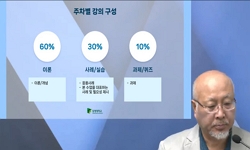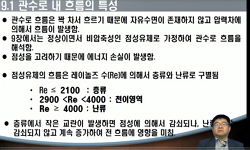본 연구에서는 인지 및 유추적 이해능력의 대리 변수로서 연령이라는 새로운 변수를 고려하여 기존의 연구에서는 다루어지지 않았던 집단인 아동을 대상으로 모 브랜드와 확장제품 간의 유...
http://chineseinput.net/에서 pinyin(병음)방식으로 중국어를 변환할 수 있습니다.
변환된 중국어를 복사하여 사용하시면 됩니다.
- 中文 을 입력하시려면 zhongwen을 입력하시고 space를누르시면됩니다.
- 北京 을 입력하시려면 beijing을 입력하시고 space를 누르시면 됩니다.
https://www.riss.kr/link?id=A60128652
- 저자
- 발행기관
- 학술지명
- 권호사항
-
발행연도
2012
-
작성언어
Korean
- 주제어
-
KDC
321.89
-
등재정보
KCI등재
-
자료형태
학술저널
-
수록면
207-223(17쪽)
-
KCI 피인용횟수
3
- 제공처
- 소장기관
-
0
상세조회 -
0
다운로드
부가정보
국문 초록 (Abstract)
본 연구에서는 인지 및 유추적 이해능력의 대리 변수로서 연령이라는 새로운 변수를 고려하여 기존의 연구에서는 다루어지지 않았던 집단인 아동을 대상으로 모 브랜드와 확장제품 간의 유사성 수준별 효과적인 브랜드확장의 광고 유형에 대해 살펴보았다. 구체적으로, 아동을 대상으로 2(브랜드확장의 광고유형: 관련성 광고 vs. 정교화 광고) X 2(모 브랜드와 확장제품 간의 유사성 수준: 유사확장 vs. 비유사확장) 집단간 실험설계를 적용하여 모 브랜드와 확장 제품 간의 유사성 수준별로 브랜드확장의 광고유형 효과가 어떻게 달라지는지 알아보았다. 분석결과, 기존의 성인을 대상으로 한 연구결과와는 달리 아동의 경우에는 효과적인 브랜드확장의 광고유형이 모 브랜드와 확장제품 간의 유사성 수준에 따라 달라지는 것으로 나타났다. 즉, 모 브랜드와 확장제품 간의 유사성 수준 이 높은 경우에는 정교화 광고보다 관련성 광고에서 확장제품에 대한 평가가 더 호의적이었던 반면에, 두 제품 간 의 유사성 수준이 낮은 경우에는 정교화 광고보다 관련성 광고에서 확장제품에 대한 평가가 더 비호의적인 것으로 나타났다. 성인과 달리 아동을 대상으로 브랜드확장 광고를 할 경우에는 모브랜드와 확장제품 간의 유사성 수준을 고려하여 광고유형을 선택적으로 사용해야 함을 본 연구결과는 시사하고 있다.
다국어 초록 (Multilingual Abstract)
For successful brand extension, company can use advertising strategy. Advertising in brand extension can be distinguish relational and elaborational advertising. Relational advertising usually has the goal which strengthen the relationship or associat...
For successful brand extension, company can use advertising strategy. Advertising in brand extension can be distinguish relational and elaborational advertising. Relational advertising usually has the goal which strengthen the relationship or associations between parent brand and extended product. On the other hand, elaborational advertising has the goal which cut off the associations between parent brand and extended product through emphasizing the properties of extended product. According to prior research, the effectiveness of relational and elaborational advertising can be moderated by many conditions, such as the level of familarity toward parent brand, regulatory focus and so on. In this research stream, we suggest that age of consumer can moderate the effectiveness of advertising strategy in brand extension. Prior researches suggest that adults and children have different abilities in cognitive process. Children have low-level cognitive abilities, and they develop more sophisticated decision-making abilities as they matured. Because of this difference, we can anticipate that children`s evaluation on extended product should be different from adults. We examine which advertising strategy in brand extension is more effective for children when the similarity level between the parent brand and the extended product is high or not. Specifically, we predict that children may evaluate favorably extended product in relational advertising condition than elaborational one when the similarity between parent brand and extended product is high. On the other hand, children should evaluate more positively extended product in elaborational advertising condition than relational one when the similarity is low. To reveal the findings, the present study conducts an experiment with children samples, and subjects are randomly assigned to the cells of 2(advertising type: elaborational ad vs. relational ad) X 2(similarity level between parent brand and extended product: high vs. low) betweensubject factorial design. Subjects in the study are drawn from 4~6 grade class at an elementary school. A total of 120 students participate in this experiment and 115 data are used for analysis. For low-level similarity condition, we choose gagglin(i.e., gaggle brand in Korea) as parent brand and chocolate is selected for extended category. For high-level similarity condition, we choose also gagglin as parent brand and gum is selected for extended category. And we make print advertising for manipulating advertising type and similarity level, then a total of 4 types of advertising is made for this study. We analyze data using a 2(advertising type: elaborational ad vs. relational ad) × 2(similarity level between parent brand and extended product: high vs. low) analysis of variance(ANOVA). The results of ANOVA show that the interaction effect between advertising type(elaborational or relational ad) and similarity level(high or low) is significant(F=12.764, p<0.01). In addition, the results show that children evaluate favorably extended product in relational advertising condition(M=5.16) than elaborational advertising condition(M=4.29) when the similarity between parent brand and extended product is high(F=4.353, p<0.05). On the other hand, children`s evaluation is reversed when the similarity between parent brand and extended product is low. Specifically, children make more positive evaluation on extended product in elaborational advertising condition(M=5.24) than relational advertising condition(M=4.02; F=8.879, p<0.01). Thus, our predictions are supported. This research has theoretical and practical implications. First, this research can contribute theoretically for developing knowledge about child consumers. This research extends the boundary of brand extension research from adult to children consumers and we demonstrate that the impact of advertising strategy in brand extension can be changed for children. Second, this research suggests practical implication for selecting advertising type in children product category. When the similarity between parent and extended brand is high, marketers should use relational advertising for child consumers, whereas elaborational advertising is better when the similarity is low.
참고문헌 (Reference)
1 허종호, "확장제품의 성패가 모브랜드에 미치는 반향효과: 확장제품 광고유형의 조절적 역할" 대한경영학회 24 (24): 307-321, 2011
2 전성률, "지난 10년간 브랜드에 대한 국내 연구성과 검토와 향후 전개방향의 제언" 한국소비자학회 21 (21): 141-192, 2010
3 허종호, "수직적 브랜드확장시 확장제품의 광고유형에 따른 소비자의 확장제품평가에 관한 연구" 한국광고학회 16 (16): 95-118, 2005
4 이우용, "브랜드확장의 지각된 적합성이 확장제품 광고유형에 따른 소비자 태도에 미치는 영향에 관한 연구" 한국마케팅학회 17 (17): 93-122, 2002
5 이미영, "브랜드 확장제품에 대한 태도에서 광고유형과 조절적 동기의 효과 연구" 한국방송광고공사 (74) : 61-87, 2007
6 신지아, "브랜드 확장 시 확장제품의 광고유형이소비자 태도에 미치는 영향에 관한 연구: 확장제품의 지각된 적합성, 광고유형, 브랜드 애착을 중심으로" 한국광고홍보학회 12 (12): 257-287, 2010
7 전성률, "광고유형에 따른 소비자의 상표확장 평가에 관한 연구" 42 (42): 31-47, 1999
8 차유철, "광고가 부적합 확장에 미치는 영향 연구" 한국광고학회 14 (14): 119-140, 2003
9 Zhang, Shi, "“Deep” and“Surface” Cues: Brand Extension Evaluationsby Children and Adults" 29 : 129-141, 2002
10 Lane, Vicki R., "The Impact of Ad Repetition and Ad Content on Consumer Perceptions of Incongruent Extensions" 64 : 80-91, 2000
1 허종호, "확장제품의 성패가 모브랜드에 미치는 반향효과: 확장제품 광고유형의 조절적 역할" 대한경영학회 24 (24): 307-321, 2011
2 전성률, "지난 10년간 브랜드에 대한 국내 연구성과 검토와 향후 전개방향의 제언" 한국소비자학회 21 (21): 141-192, 2010
3 허종호, "수직적 브랜드확장시 확장제품의 광고유형에 따른 소비자의 확장제품평가에 관한 연구" 한국광고학회 16 (16): 95-118, 2005
4 이우용, "브랜드확장의 지각된 적합성이 확장제품 광고유형에 따른 소비자 태도에 미치는 영향에 관한 연구" 한국마케팅학회 17 (17): 93-122, 2002
5 이미영, "브랜드 확장제품에 대한 태도에서 광고유형과 조절적 동기의 효과 연구" 한국방송광고공사 (74) : 61-87, 2007
6 신지아, "브랜드 확장 시 확장제품의 광고유형이소비자 태도에 미치는 영향에 관한 연구: 확장제품의 지각된 적합성, 광고유형, 브랜드 애착을 중심으로" 한국광고홍보학회 12 (12): 257-287, 2010
7 전성률, "광고유형에 따른 소비자의 상표확장 평가에 관한 연구" 42 (42): 31-47, 1999
8 차유철, "광고가 부적합 확장에 미치는 영향 연구" 한국광고학회 14 (14): 119-140, 2003
9 Zhang, Shi, "“Deep” and“Surface” Cues: Brand Extension Evaluationsby Children and Adults" 29 : 129-141, 2002
10 Lane, Vicki R., "The Impact of Ad Repetition and Ad Content on Consumer Perceptions of Incongruent Extensions" 64 : 80-91, 2000
11 Gregan-Paxton, Jennifer, "The Emergence of Adaptive Decision Making in Children" 24 : 43-56, 1997
12 Taylor, Valerie A, "The Effects of Price on Brand Extension.Evaluations: The Moderating Role of ExtensionSimilarity" 30 (30): 131-140, 2002
13 Paris, Scott G, "The Development of Inferential Comprehension" 48 : 1728-1733, 1977
14 Piaget, Jean, "The Child's Conception of the World" Littlefield 1967
15 Payne, John W., "Task Complexity and Contingent Processing in Decision Making: An Information Search and Protocol Analysis" 16 (16): 366-387, 1976
16 Gentner, Dedre, "Systematicity and Surface Similarity in the Development of Analogy" 10 (10): 277-300, 1988
17 Bahn, Kenneth D., "How and When Do Brand Perceptions and Preferences First Form? A cognitive Developmental Investigation" 13 : 382-393, 1986
18 Ward, Scott, "How Children Learn to Buy" Sage 1977
19 Park, C. Whan, "Evaluation of Brand Extensions:The Role of Product Feature Similarity andBrand Concept Consistency" 18 : 185-193, 1991
20 Davidson, D., "Developmental Difference in Children's Search of Predecisional Information" 52 : 239-255, 1991
21 Turner, Josephine, "Development and Validation of a SimulatedMarket to Test Children for Selected ConsumerSkills" 12 (12): 266-276, 1978
22 John, Deborah Roedder, "Consumer Socialization of Children: A retrospective Look at Twenty Five Years of Research" 26 : 183-213, 1999
23 Sujan, Mita, "Consumer Knowledge: Effects on Evaluation Strategies Mediating Consumer Judgments" 12 : 31-46, 1985
24 Aaker, David A, "Consumer Evaluations of Brand Extensions" 54 : 27-41, 1990
25 Bridges, Sheri, "Communication Strategies for BrandExtensions: Enhancing Perceived Fit byEstablishing Explanatory Links" 29 : 2-11, 2000
26 Kim, Joo Young, "Communication Message Strategies for Brand Extensions" 12 (12): 462-476, 2003
27 Brucks, Merrie, "Children's Use of Cognitive Defenses Against Television Advertising: A Cognitive Response Approach" 14 : 471-482, 1988
28 Fiske, Susan T, "Category-Based Versus Piecemeal-Based Affective Responses: Developments in Schema- Triggered Affect, In The Handbook of Motivation and Cognition: Foundations of Social Behavior" Guilford Press 167-203, 1986
29 Roedder, Deborah L, "Attitude-Behavior Consistency in Children's Responses to Television Advertising" 20 : 337-349, 1983
30 Gregan-Paxton, Jennifer, "Are Young Children Adaptive DecisionMakers? A Study of Age Differences inInformation Search Behavior" 21 : 567-580, 1995
31 John, Deborah Roedder, "Age. Differences in InformationProcessing: Understanding Deficits in Youngand Elderly Consumers" 13 : 297-315, 1986
32 John, Deborah Roedder, "Age differences in Product Categorization" 16 : 452-460, 1990
33 Roedder, Deborah L., "Age Differences in Children's Responses to Television Advertising: An Information-Processing Approach" 8 : 144-153, 1981
34 Park, Jong-Won, "Acceptance of Brand Extensions: Interactive Influences of Product Category Similarity, Typicality of Claimed Benefits, and Brand Relationship Quality" 29 (29): 190-198, 2002
35 한국경제TV, "1인 자녀증가로 키즈카페 매출도 고공행진 중"
동일학술지(권/호) 다른 논문
-
준거점 의존에 따른 묶음제품의 선호이행: 준거 제시와 할인가격제시방법을 통한 초점화 효과
- 한국소비자학회
- 강윤희 ( Yoon Hee Kang )
- 2012
- KCI등재
-
- 한국소비자학회
- 신연욱 ( Yeun Wook Shin )
- 2012
- KCI등재
-
- 한국소비자학회
- 박상준 ( Sang June Park )
- 2012
- KCI등재
-
기업 부정정보의 정정주체에 따른 소비자 태도회복 효과 연구: 부정정보의 신뢰수준과 기업지위의 조절효과를 중심으로
- 한국소비자학회
- 김동태 ( Dong Tae Kim )
- 2012
- KCI등재
분석정보
인용정보 인용지수 설명보기
학술지 이력
| 연월일 | 이력구분 | 이력상세 | 등재구분 |
|---|---|---|---|
| 2026 | 평가예정 | 재인증평가 신청대상 (재인증) | |
| 2020-01-01 | 평가 | 등재학술지 유지 (재인증) |  |
| 2017-01-01 | 평가 | 등재학술지 유지 (계속평가) |  |
| 2013-01-01 | 평가 | 등재학술지 유지 (등재유지) |  |
| 2010-01-01 | 평가 | 등재학술지 유지 (등재유지) |  |
| 2008-01-01 | 평가 | 등재학술지 유지 (등재유지) |  |
| 2006-01-01 | 평가 | 등재학술지 유지 (등재유지) |  |
| 2004-01-01 | 평가 | 등재학술지 유지 (등재유지) |  |
| 2001-07-01 | 평가 | 등재학술지 선정 (등재후보2차) |  |
| 1999-01-01 | 평가 | 등재후보학술지 선정 (신규평가) |  |
학술지 인용정보
| 기준연도 | WOS-KCI 통합IF(2년) | KCIF(2년) | KCIF(3년) |
|---|---|---|---|
| 2016 | 1.48 | 1.48 | 1.67 |
| KCIF(4년) | KCIF(5년) | 중심성지수(3년) | 즉시성지수 |
| 1.7 | 1.88 | 2.351 | 0.15 |




 KISS
KISS







